
The core barrier to peace in Israel/Palestine is that key actors are content with conflict management. This prevents the necessary dedication to power through conflict resolution. Palestinians know that empirically, for they are the ones paying the highest price from the status quo. This predicament, not religion or nationalism, guides their choices when they have the chance. This article will compare historical events to illustrate the point.
From the start, we need to appreciate that the experience of the last five generations of Palestinians has been that they rarely control their fate. Whether it was the Turkish Ottomans, the British Empire, the Jordanian monarchy, or the Israeli occupation, a foreigner was telling them what, where, when and how they can do things. Moreover, Palestinian elites who facilitated that control were also seen as illegitimate instruments of a foreign power. The public saw education and political struggle as the road to self-determination. However, the continual dispossession and loss of freedoms led many to lose faith in the approach of reasoned argument. They saw that, in a world where might makes right, only force can make a difference.
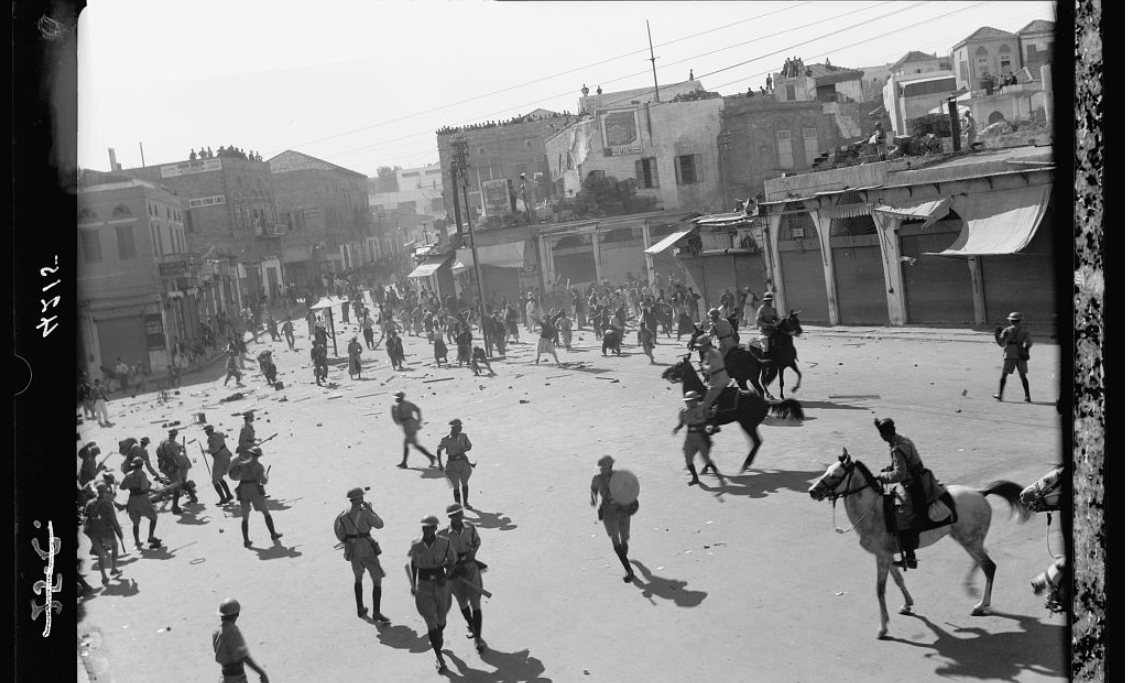
A good illustration of that is the use of Israeli hostages to release Palestinian prisoners. The Oslo Accords (1995) stipulated that all Palestinian prisoners would be released within 18 months of signing the agreement. It was one of several “confidence-building” measures envisaged by the architects of the accords. Yet, the release of Palestinian prisoners stalled.
The Chief Palestinian Negotiator, the late Saeb Erekat, worked for years to get the Israeli government to release the remaining prisoners it had already committed to releasing in Oslo, but to no avail. In October 2000, Hezbollah of Lebanon abducted three Israeli soldiers and, in response a few years later, Israel released more than 400 Palestinian and 30 Lebanese prisoners. In 2006, Hamas abducted Israeli soldier Gilat Shalit and secured the exchange of more than 1,000 Palestinian prisoners in 2011. Those results undermined the secular Palestinian Authority’s argument for diplomacy.
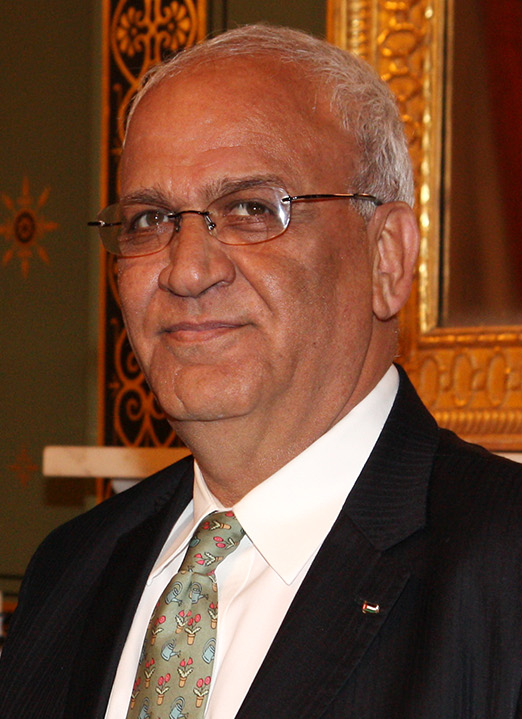
Similarly, when Israel withdrew from southern Lebanon on May 24, 2000, without an agreement with Hezbollah, my Christian friend Jane said, “you know what? I am more excited about this withdrawal than I was when the Israeli military withdrew from Bethlehem in 1995. This one came with dignity, pride, and with no strings attached. A true victory, not a re-arrangement.”
I was surprised. Four months later, the second Intifada erupted, and I understood what she had said. Just like the first Intifada, the Israelis were caught completely by surprise. The tables had turned, as it was the Palestinians who were taking the initiative and Israel reacting. The building of Israeli settlements slowed down, international engagement increased and, for the first time in more than 20 years, the Israeli Peace Now movement published a report on Israeli settlements specifying which ones should be evacuated in order to make way for a viable Palestinian state. After seven years of “peace processing,” the Israeli public finally started debating what they were willing to give up in order to achieve a lasting peace.
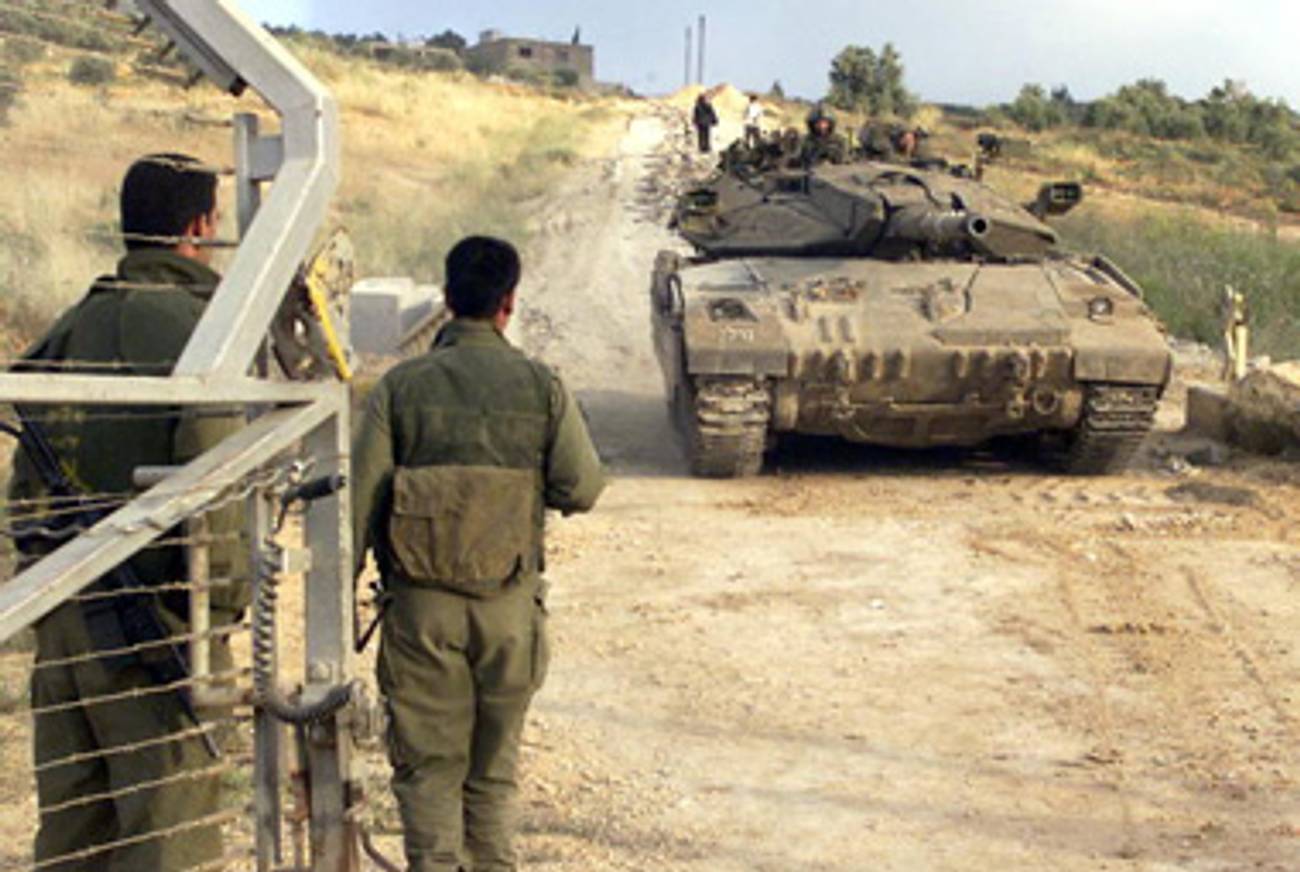
Conversely, when Palestinians resorted to non-violence, there was international praise and admiration, but nothing more. No substantive actions were taking to support the plight of the Palestinians whenever Israel responded aggressively to their non-violent resistance. For example, in 1983, Mubarak Awad, the so-called “Palestinian Gandhi,” established the Palestinian Centre for the Study of Nonviolence in Jerusalem which taught non-violent tactics. However, Israeli authorities deported him just a few months after the eruption of the first Intifada in September 1987.
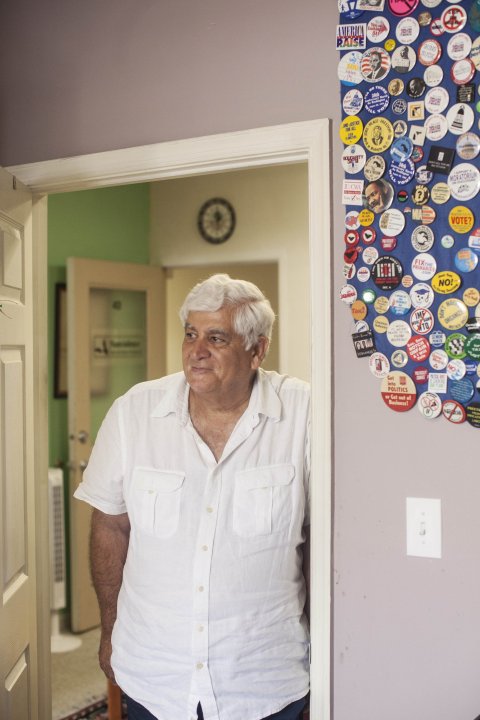
The Israeli Prime Minister back then (Yitzhak Shamir) cited Awad’s call for civil disobedience as the reason for his expulsion. To this day, whenever Awad goes to visit his hometown, Israeli authorities do not grant him more than a two-week tourist visa. Ultimately, the first Intifada brought the cruelty of the military occupation to the TV sets of all Israelis and to the world. Israel’s image as a liberal democracy was shattered and, for the first time, the Israeli government recognized the Palestinians as a national group. Until then, the official policy was to refer to Palestinians as Arabs, Druze, or Circassian if they were Palestinian citizens of Israel, or non-Israeli permanent residents if they were in the Occupied Territories, and Jordanian citizens if they were in East Jerusalem.
Extracting that Israeli recognition of Palestinian nationhood was important for Palestinians in order to counter the Zionist claim that they do not belong since there are 23 other Arab countries to which they can go. More recent non-violent campaigns, like fighting land confiscations, have had limited success in achieving results. The latest attempt was the 2018-2019 Great March of Return in Gaza. While the demonstrations had few incidents of violence, more than 200 protesters were killed and 9,000 injured, mostly by Israeli snipers who used American hunting ammunition designed to inflict maximum damage to the body.

Many Palestinians cite these examples of grossly disproportionate responses to non-violence as the main reason for supporting violent means. And here lies the heart of how Palestinians make their decisions. Palestinians are guided by efficacy and results. They are indeed agnostic to the method so long as it achieves better results than other methods. Whether it was appeal to tribal pride, Marxist ideology, Islamist ideology, diplomacy or non-violence, the operative factor is efficacy. Or at least, perception of efficacy. The lesson Palestinians, and Arabs more generally, took from the 1973 war was that military victory over Israel is impossible. The late Egyptian president famously told his critics, “I can fight Israel, but I cannot fight the U.S.!” in reference to the U.S. air bridge of military supplies that helped Israel stymie the Arabs’ initial success.
In 1974, the Palestinian leadership shifted to using military pressure to force Israel to negotiate with it. After Israel expelled the Palestinian armed groups from Lebanon in 1982, the Palestinians in the Occupied Territories realized that there was no Saladin, Gamal Abdel Nasser, or Yasser Arafat coming to save them. Five years later, the first Intifada erupted in the Occupied Territories. Ironically, Israel’s overwhelming military superiority was ineffective against unarmed civilians. That was, of course, a deliberate strategy by the Palestinians.
The goal was to bring the world’s attention to the cruelty of Israel’s military occupation as well as the Palestinian quest for freedom and dignity. No matter how hard they tried, the Israeli authorities could not hide that fact from the world or the Israeli public. Until that moment, they saw the Palestinians as just a few pacified Arabs living in a patchy set of localities under the benign administration of the “world’s most moral army.” The images on their TV set dispelled that notion.
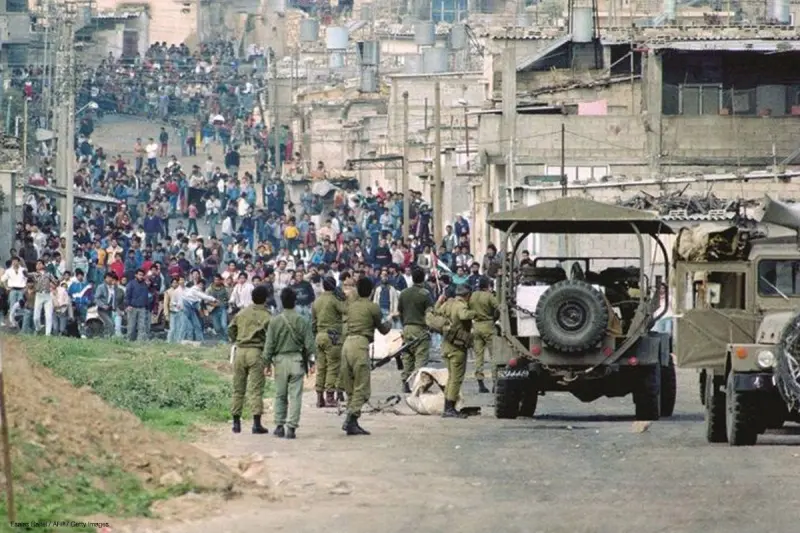
The Oslo Accords were the fruits of that struggle. In theory, it was a road map to Palestinian emancipation. Most Palestinians were jubilant at that prospect while others like Hamas were convinced that it was a ruse. They argued that it was meant to relieve Israel from the burdens of occupation while it accelerated land confiscation and settlement building. Nonetheless, the parties went ahead with implementing the terms of the agreement. Barely a year after signing it, an Israeli extremist killed 29 Palestinian worshipers in a holy site in Hebron. Hamas started targeting Israeli civilians. Another Israeli extremist assassinated Prime Minister Yitzhak Rabin, and the construction of Israeli settlements in the Occupied Territories continued unabated.
For the Palestinian public, witnessing the entrenchment of the Israeli occupation coupled with the Palestinian Authority’s incapacity to stop it, eroded support for the peace process. Palestinians realized that the accords left them worse off. Before Oslo, restrictions were fewer, the economy was better, and Israeli settlements were not expanding at the accelerated rate witnessed after the accords. The Palestinian leadership’s incompetence and corruption exacerbated the situation. The public resolved that there needed to be a drastic change. Yet, the brewing revolt against their leadership got displaced when Prime Minister Ariel Sharon provocatively went into the Al-Aqsa compound with hundreds of Israeli soldiers. The pent-up anger was redirected toward the Israeli occupation.
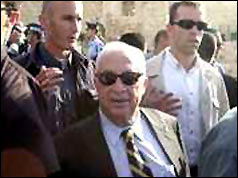
Many Israelis believed their government’s line claiming that Arafat planned the intifada and sought a “two-stage” rather than a “two-state” solution, that is, aiming to use the West Bank and Gaza as a base against Israel. However, Arafat had very little authority by then since it was eroded over seven years of Israeli violations. What he did do, though, was allow the uprising to grow in order to get the Israelis to understand that he was the key to their security and that the alternative was worse. He concurred with Hamas’s view that Israeli negotiators had no incentive to concede if there was no credible alternative that was bad for Israel. He went as far as sanctioning the transport of Iranian arms to Gaza with the Karine A incident, which came to light when the Israeli military seized a Palestinian freighter in the Red Sea ellegedly carrying tons of weapons.
In 2005, after Arafat’s death, Mahmoud Abbas was elected President. He received 67% of the vote while Hamas and Jihad Islami boycotted. Here, it is crucial to understand why people voted for him, for Abbas hardly had a constituency. In fact, he was at best unpopular and at worst suspect in the eyes of most Palestinians. An unassuming member of Fatah, who was among the first to call for talks with Israelis in the mid-1970s, he was seen as an outlier. Heading the negotiations department made him even more unpopular.
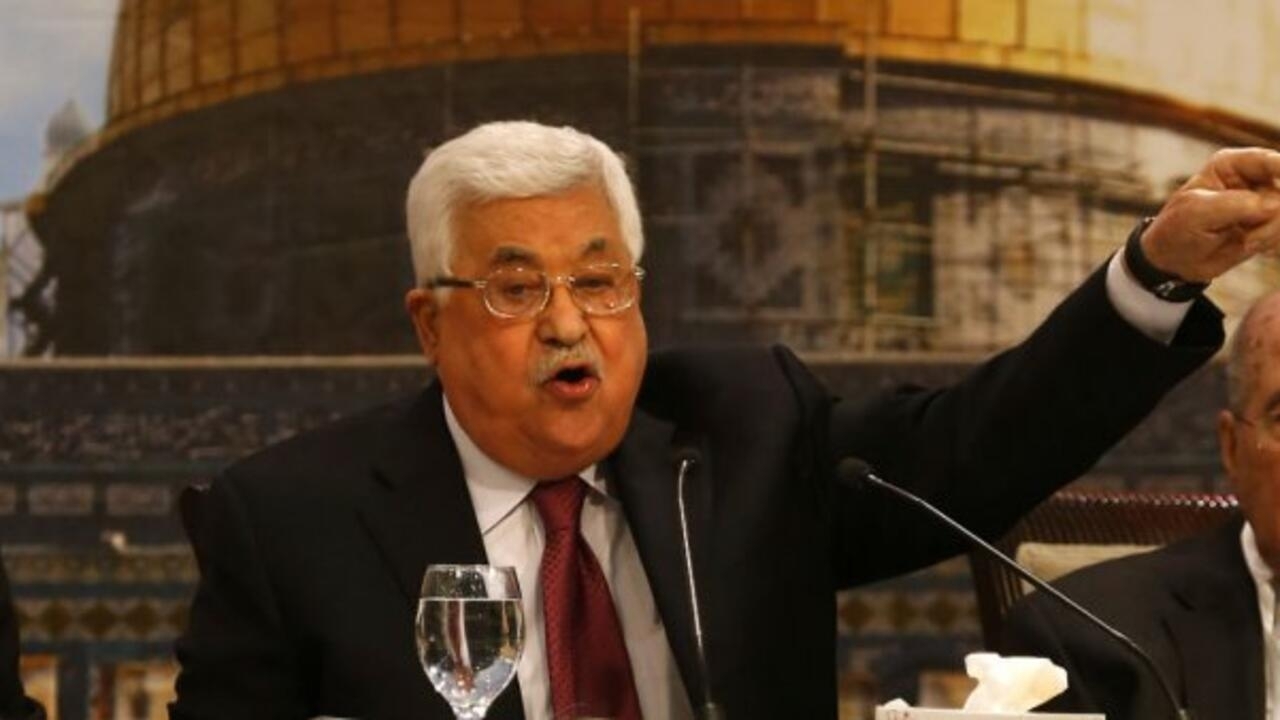
Yet they also knew that he had good relations with the Israelis and the Americans. Hence, voters wagered that, if anyone could elicit concessions from Israel, it would be him. Alas, when legislative elections were held in 2006, he and his Fatah party had very little to show. Palestinians compared that to Israel’s withdrawal from Gaza (a Hamas stronghold) in 2005 and from southern Lebanon before that also because of Hezbollah attacks, the contrast could not have been clearer. While everyone was shocked by Hamas’s win (including Hamas) the reality was that Palestinians were aching for change. Even Christians voted for Hamas.
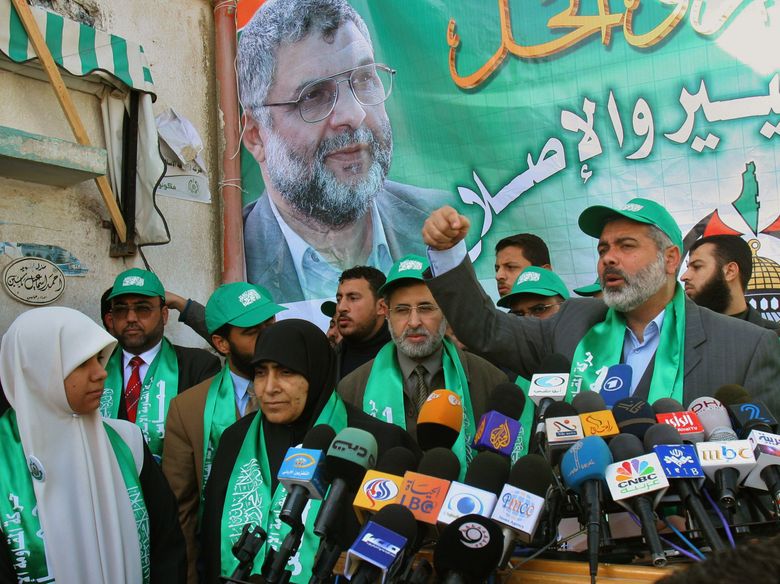
Therefore, when people wonder why Palestinians choose the way they do, the answer is that they choose based on what they think is going to get them results. It is true: Most Palestinians were excited by the news of the October 7th attack, not because of the unprecedented number of civilian Israelis killed, but because they knew what a blow it was to Israel’s sense of security.
For a Palestinian group to deceive the greatest intelligence agency and wrest power from the strongest army in the region meant that—now—Palestinians could finally negotiate with the Israelis on equal footing, especially when contrasted to how, in the Six-Day War, Israel defeated the armies of three Arab countries and quadrupled the territory under its control. The shock, awe and total collapse of military defenses that Arabs experienced in 1967 is now being experienced by the Israelis for the first time.
That humiliation of gross incompetence and weakness, the incomprehension of how it could have happened, and, more importantly, not knowing if you can prevent it from happening again.
It is not the number of casualties or hostages taken that sent shivers down the spines of Israeli decision-makers. It was their realization that so much of what they thought they knew about their enemy turned out to be wrong. The fact that Israel has very little to show after eight months of relentless pounding betrays the extent to which its military and intelligence services are in uncharted territory. Of course, it is coming at an extremely high price, but it may well provide the kind of deterrence that has held for the most part in south Lebanon since 2006.

CovertAction Magazine is made possible by subscriptions, orders and donations from readers like you.
Blow the Whistle on U.S. Imperialism
Click the whistle and donate
When you donate to CovertAction Magazine, you are supporting investigative journalism. Your contributions go directly to supporting the development, production, editing, and dissemination of the Magazine.
CovertAction Magazine does not receive corporate or government sponsorship. Yet, we hold a steadfast commitment to providing compensation for writers, editorial and technical support. Your support helps facilitate this compensation as well as increase the caliber of this work.
Please make a donation by clicking on the donate logo above and enter the amount and your credit or debit card information.
CovertAction Institute, Inc. (CAI) is a 501(c)(3) non-profit organization and your gift is tax-deductible for federal income purposes. CAI’s tax-exempt ID number is 87-2461683.
We sincerely thank you for your support.
Disclaimer: The contents of this article are the sole responsibility of the author(s). CovertAction Institute, Inc. (CAI), including its Board of Directors (BD), Editorial Board (EB), Advisory Board (AB), staff, volunteers and its projects (including CovertAction Magazine) are not responsible for any inaccurate or incorrect statement in this article. This article also does not necessarily represent the views the BD, the EB, the AB, staff, volunteers, or any members of its projects.
Differing viewpoints: CAM publishes articles with differing viewpoints in an effort to nurture vibrant debate and thoughtful critical analysis. Feel free to comment on the articles in the comment section and/or send your letters to the Editors, which we will publish in the Letters column.
Copyrighted Material: This web site may contain copyrighted material the use of which has not always been specifically authorized by the copyright owner. As a not-for-profit charitable organization incorporated in the State of New York, we are making such material available in an effort to advance the understanding of humanity’s problems and hopefully to help find solutions for those problems. We believe this constitutes a ‘fair use’ of any such copyrighted material as provided for in section 107 of the US Copyright Law. You can read more about ‘fair use’ and US Copyright Law at the Legal Information Institute of Cornell Law School.
Republishing: CovertAction Magazine (CAM) grants permission to cross-post CAM articles on not-for-profit community internet sites as long as the source is acknowledged together with a hyperlink to the original CovertAction Magazine article. Also, kindly let us know at info@CovertActionMagazine.com. For publication of CAM articles in print or other forms including commercial internet sites, contact: info@CovertActionMagazine.com.
By using this site, you agree to these terms above.
About the Author

Nizar Farsakh is a lecturer at the Elliot School of International Affairs at George Washington University.
Between 2003 and 2008 Nizar advised senior Palestinian leaders including the President, the Prime Minister and various ministries in their negotiations with Israel.
Nizar can be reached at nhfarsak@email.gwu.edu.



https://time.com/6565186/october-7-hamas-attack-footage-film/
https://www.adl.org/resources/news/hamas-their-own-words